A reprint of the 1925 Ordnance Survey map shows Workington being dominated by a criss cross of railways both passenger and freight lines, with passenger routes serving three stations these being; Workington Central, Workington Bridge and Workington Low (later Main).
The first station to open in Workington was opened on January 18th 1846 by the Whitehaven Junction railway, since at the time there was no railway between Maryport and Whitehaven. The station was opened on the site of the current one, but was two platforms with a small wooden shelter and booking office. A year later, in May 1847, Workington Bridge station would open by the Cockermouth and Workington Railway located at Calva Bridge. Then on October 1st 1879, the third station Workington Central was opened by the Cleator and Workington Junction railway. Though these names wouldn’t appear until 18th April 1880 for Workington Central and June 2nd 1924 for Workington Main.
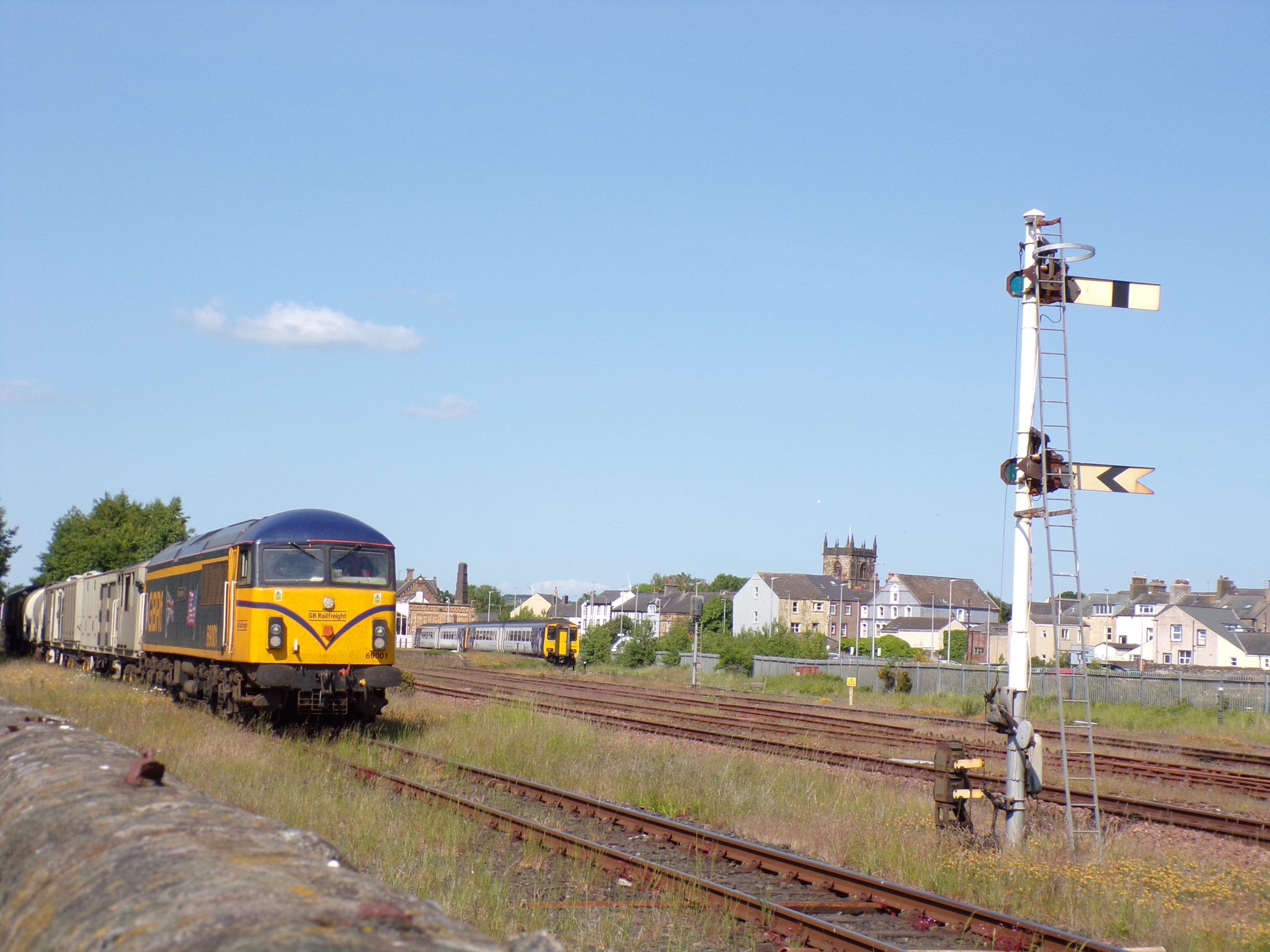
South end of the station, a GBRf 69 sits on the freight line that was once part of the freight yard. In the background a 156 sits in the bay siding, once used by T.P.O trains. Behind that was the goods yard, which closed in the 1980s and the buildings demolished and is now a carpark
By April 13th 1931, Workington Central Station closed to passengers, but did see use in 1938 when it was used as a location in the movie ‘The Stars Look Down’ with a LMS 3F and coach were used in a couple scenes.
Workington Bridge station closed on January 1st 1951 followed by the complete closer of Workington Central Station finally closed on September 26th 1965.
Today Workington Main is the last station in Workington. That was until the floods of 2009, when Workington was cut in two with Calva Bridge being damaged and the unfortunate collapse of Northside Bridge and Navvies bridge (once part of the Central Railway route), this left an almost 40 minute divert around Seaton. Only the railway bridge survived, and to help with moving people, a temporary station was constructed at Northside and named Workington North, but this only lasted a year and closed on October 8th 2010.
Through out the many railways around Workington, there were passenger trains running to Carlisle, Penrith, Cleator Moor, Egremont, Barrow and onwards to Manchester and London. Hauled by steam locos of the Maryport and Carlisle, London North Western, Midland, Furness Railway, LMS and BR, aswell as Derby Lightweight diesel multiple units.
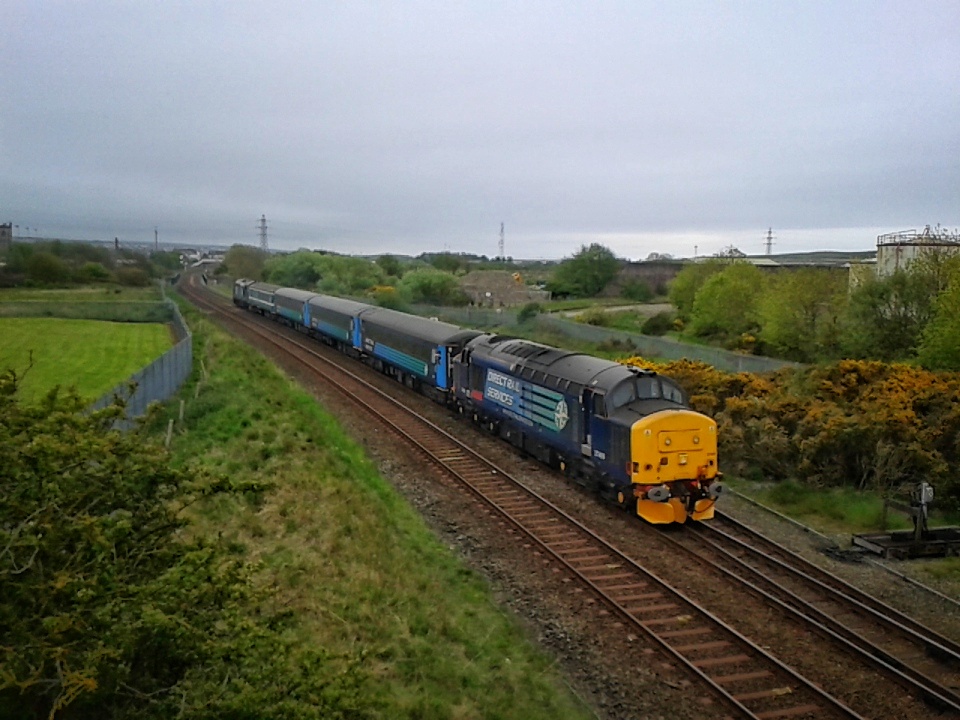
May 2015 and 37409 passes the junction that leads on go the docks. Behind the loco was site for Derwent Junction signal box, In the background on the left was the junction for C,K,&,P,R line.
Goods lines served the various collieries and mines that were scattered around the area, along with the small foundries and the Iron and steel works, with many route leading to the docks and the gas works. With all these routes, there was the Locomotive sheds in use at Workington and Siddick aswell as the docks and several industrial areas.
Today only the coast line from Carlisle to Barrow and beyond is open, but the popularity of this link is growing. Having been described as one of England’s most scenic railways. Although all the freight has gone, the line is popular with railtours with around 10 steam and diesel railtours a year between April and October.
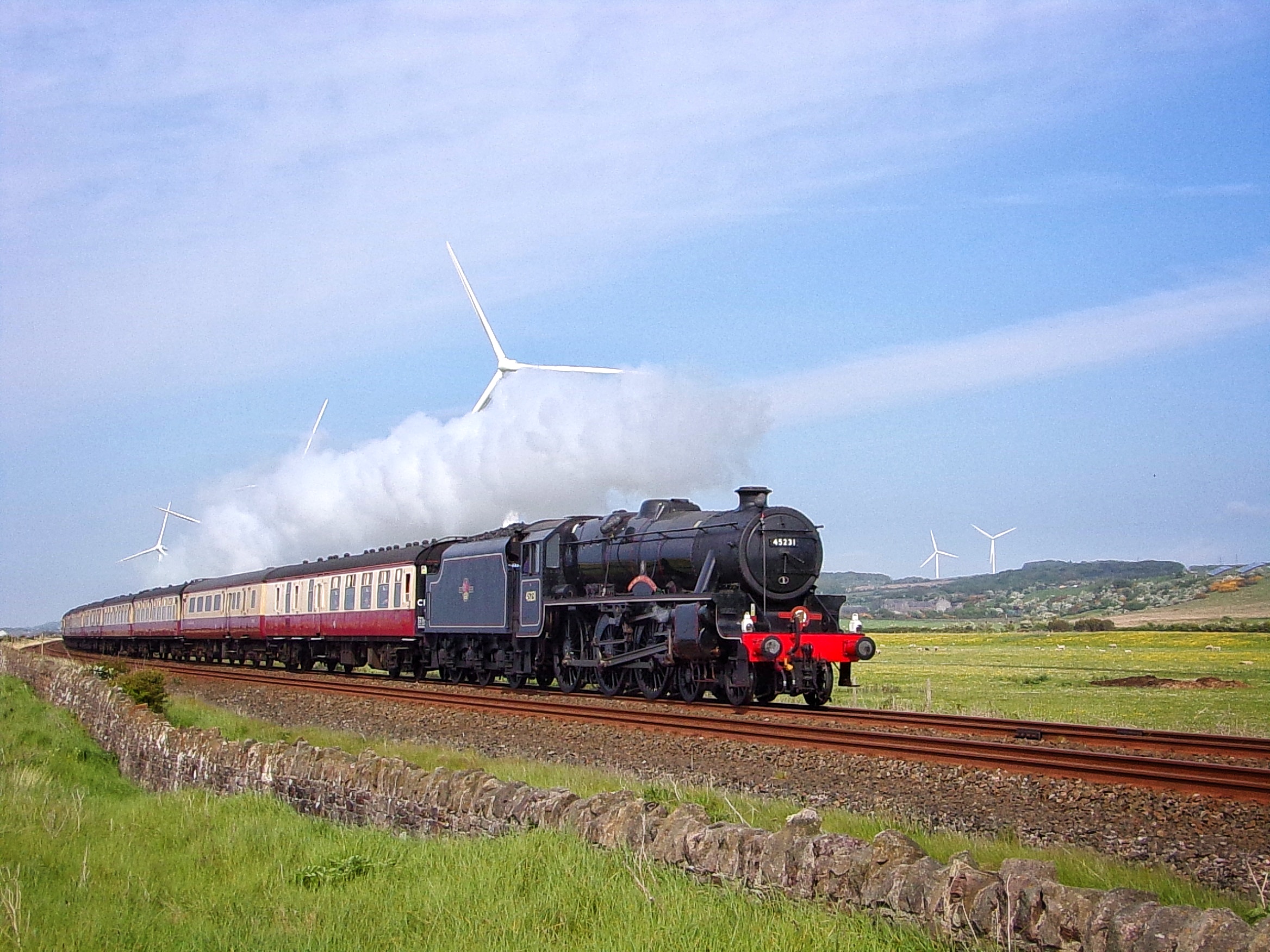
Black 5, 45231 heads the ‘Lakelander’ tour South in May 2022. In the background was the site of St Helens Coillery which closed in 1966
Following the closure of the coal mines and Marchon chemical plant at Whitehaven and the steel works and the ending of container traffic from the docks, freight traffic on the coast line dropped dramatically, with only the occasional nuclear flasks and loco moves to and from Sellafield operated by DRS Class 68s and 88s, and a weekly china clay trains into Workington docks with Colas Rail class 70s. This is supplemented by a yearly stone train from Workington to Barrow, running 3 times a week over weeks, in 2023, this was run with 2 Class 56s.
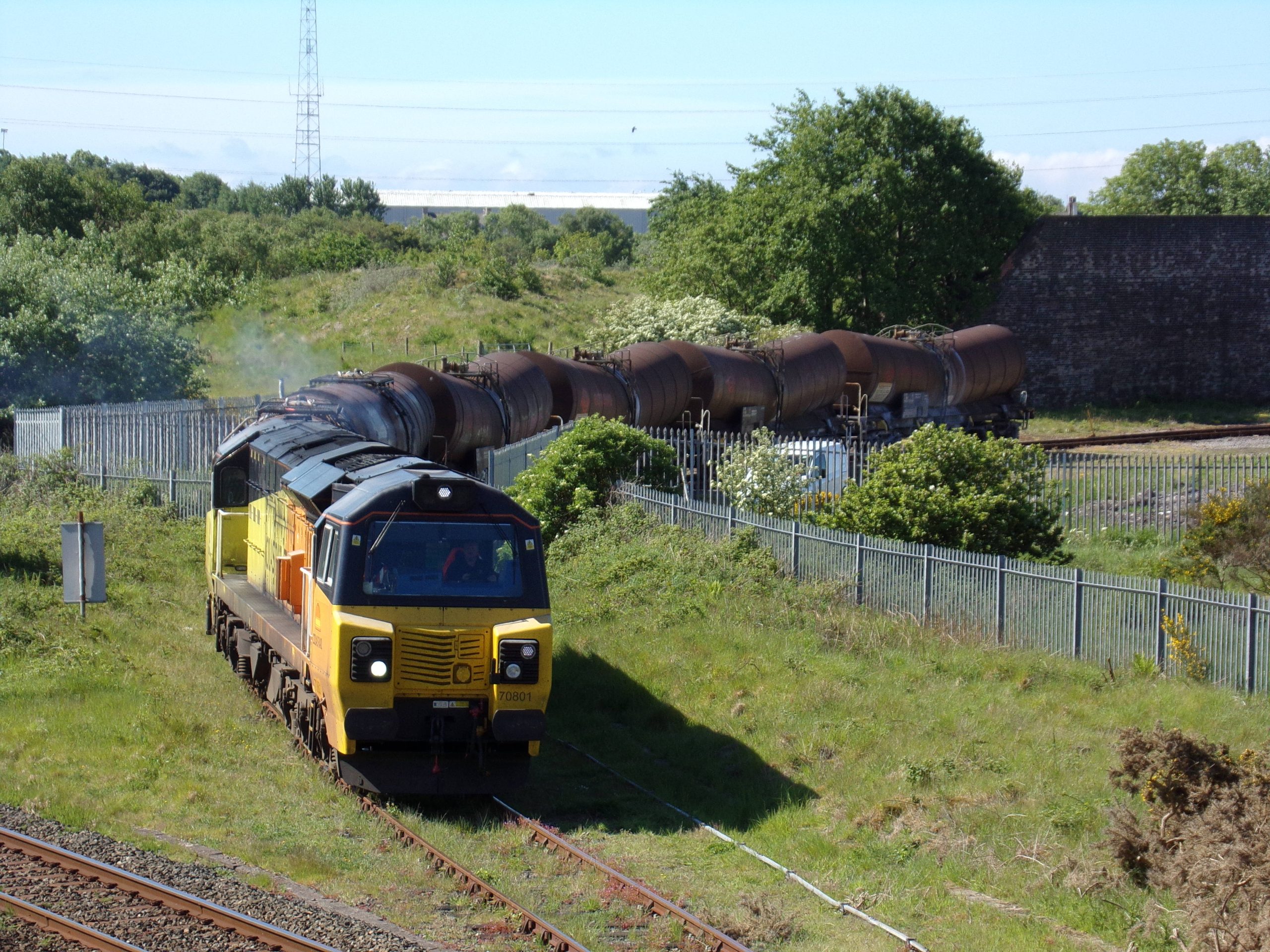
One of Colas’s Class 70s heads off the docks with the weekly china clay tanks that run from Carlisle to Aberdeen Waterloo.
Passenger trains are operated by Metro Cammell class 156 sprinter units running from Carlisle to Barrow with 4 trains a day running through to Lancaster, How ever up to 2019/2022 there use to be daily diagrams using a class 142 pacers, built by Leyland at Workington as well as Class 153 units, originally these being Class 155 two car units also being produced by Leyland in Workington, but were later converted to 153 single car units.
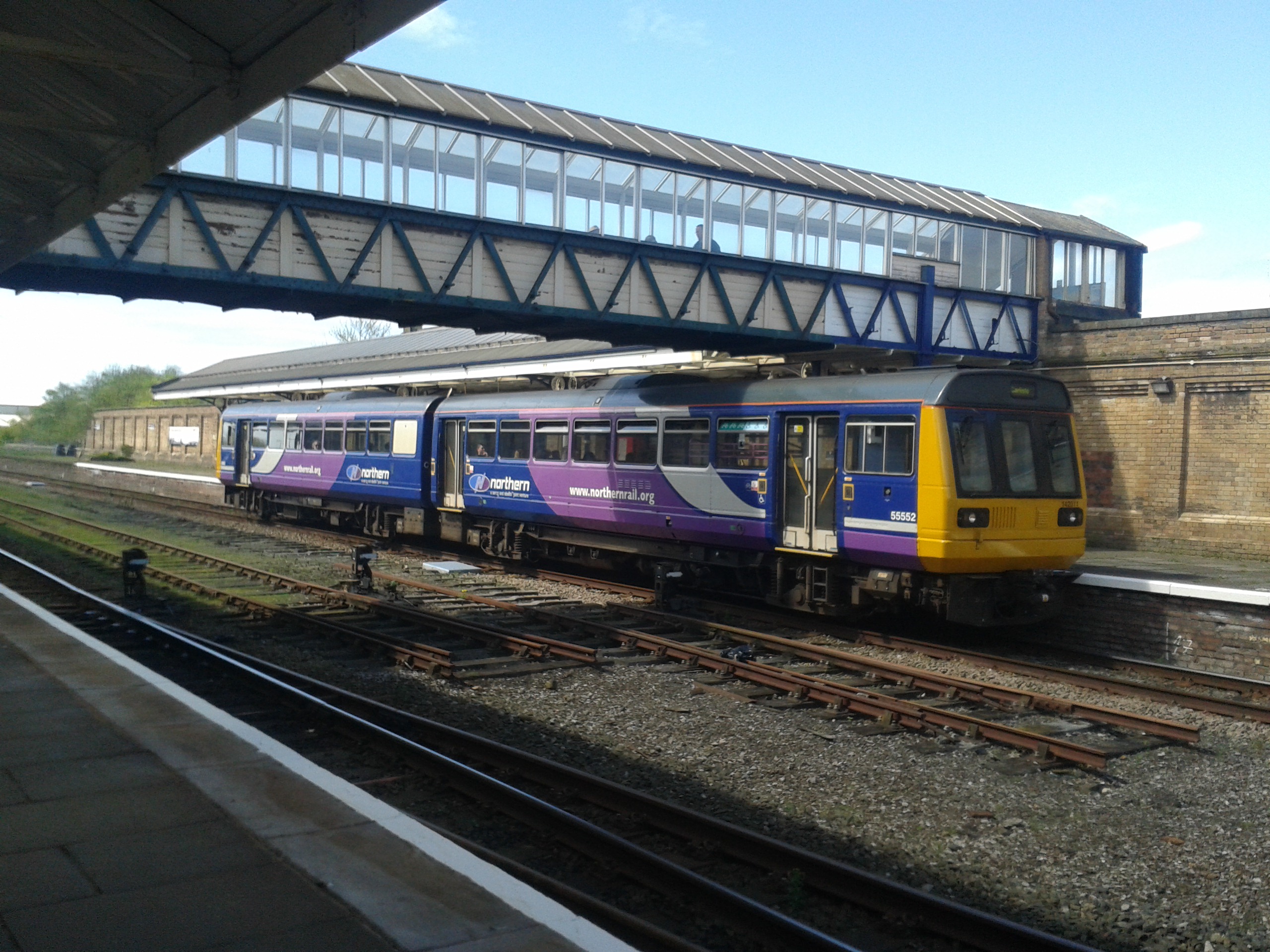
On a sunny day in May 2015, 142011 sits at Workington.
The class 142 Pacers were built as a temporary fix while new trains were designed and built to replace the ageing fleet of early DMUs. With a working life of around 10 years, the Pacers, remained with the occasional report if their withdrawal over the year, they remained in use until 2020, when the outbreak of Covid Pandemic saw them parked up and finally withdrawn, almost 40 years after entering service, scrapping started in 2021, but a small.number were bought up and preserved, many being repainted in to the rainbow or liveries, 142003 returned to mainline running in July 2023 in Greater Manchester livery.
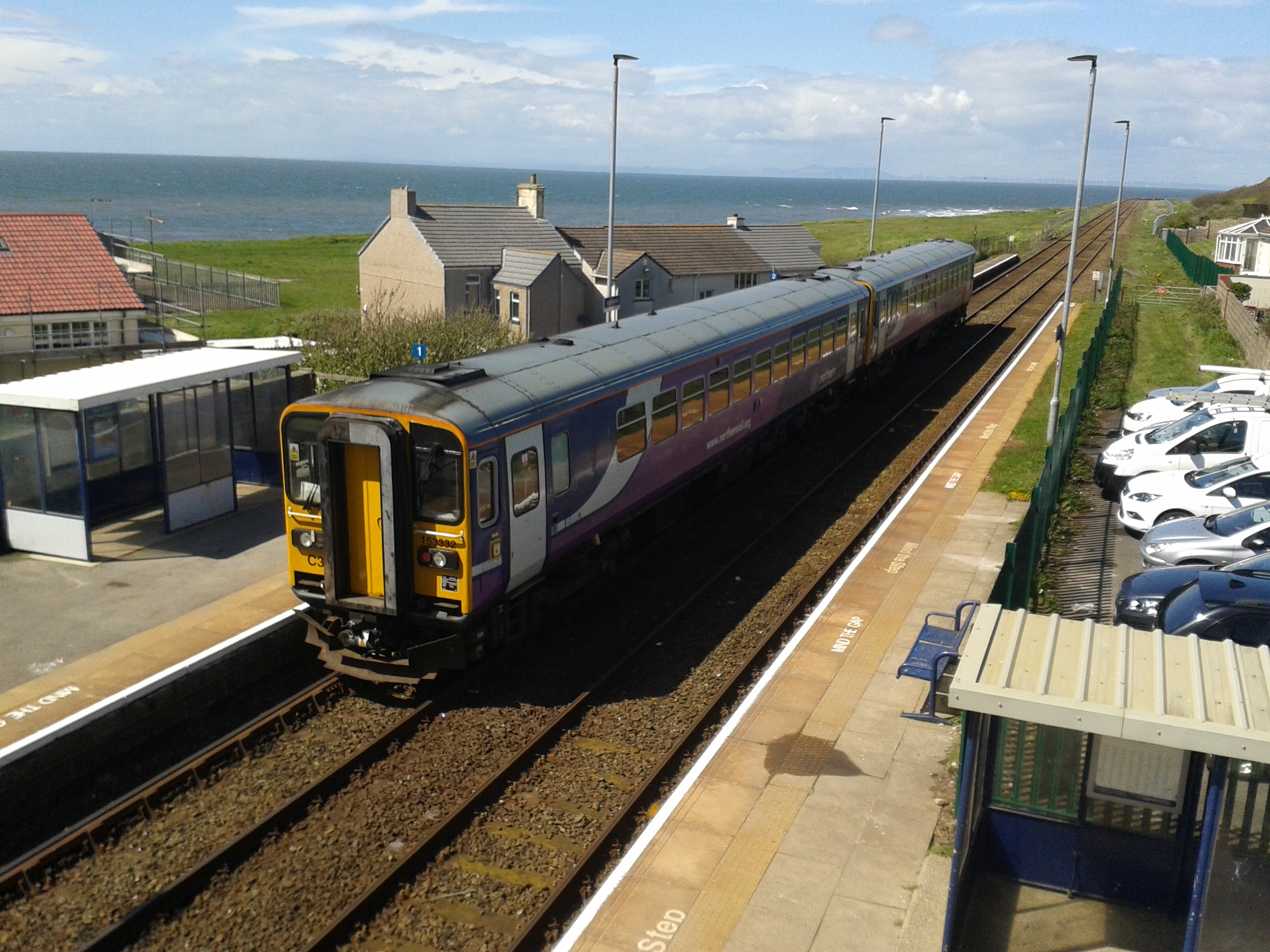
153332 running in tandem with another 153 leaves Harrington in May 2015
In 2015, Direct Rail Services provided stock for four return trips each Monday-Saturday using class 37 diesel locos and Mark 2 coaches. These longer trains were aimed at attracting Sellafield workers out of their cars to ease road congestion to the site, but soon became a magnet for rail enthusiasts for a rare experience of 37 hauled traction. During the early months these consisted of a of the following formation; Class 37/4, 3 – Mark 2 opens, Mark 2 Brake, and a Class 37/6. Following the acquisition of Mark 2 DBSO (Driving Brake Second Open) the formation was altered with the 37/6 being swapped out for the DBSOs.
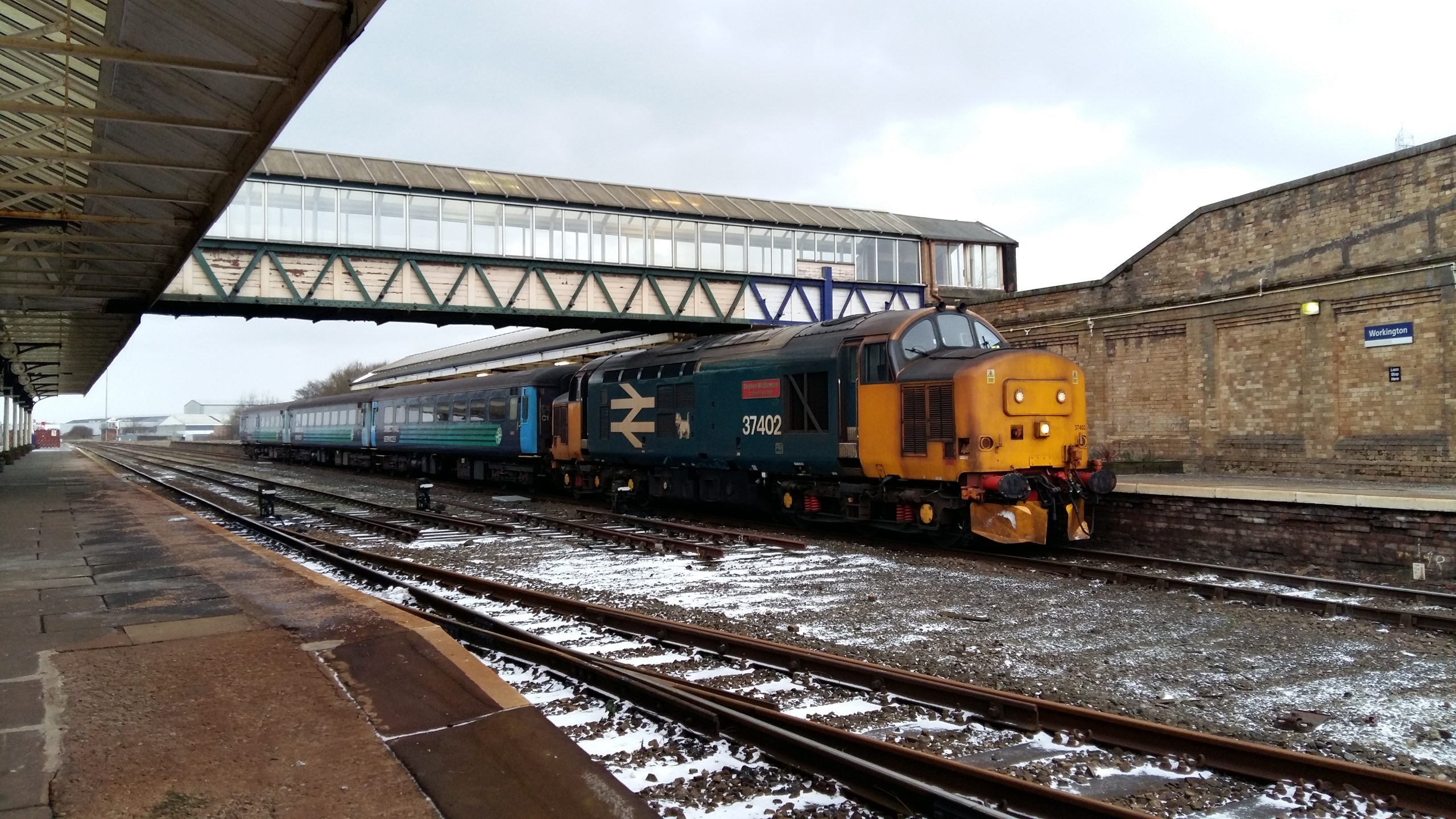
37402 sits at Workington in March 2018 with the short set, consisting of two Mk2 Opens and a DBSO
2018 saw a change in motive power, with one diagram being swapped out for top and tail class 68s. This formation consisting of; Class 68, 2 Mark 2 opens, Mark 2 DBSO, Class 68. By end of 2018 this service was cut and replaced by ex Scot Rail class 156s
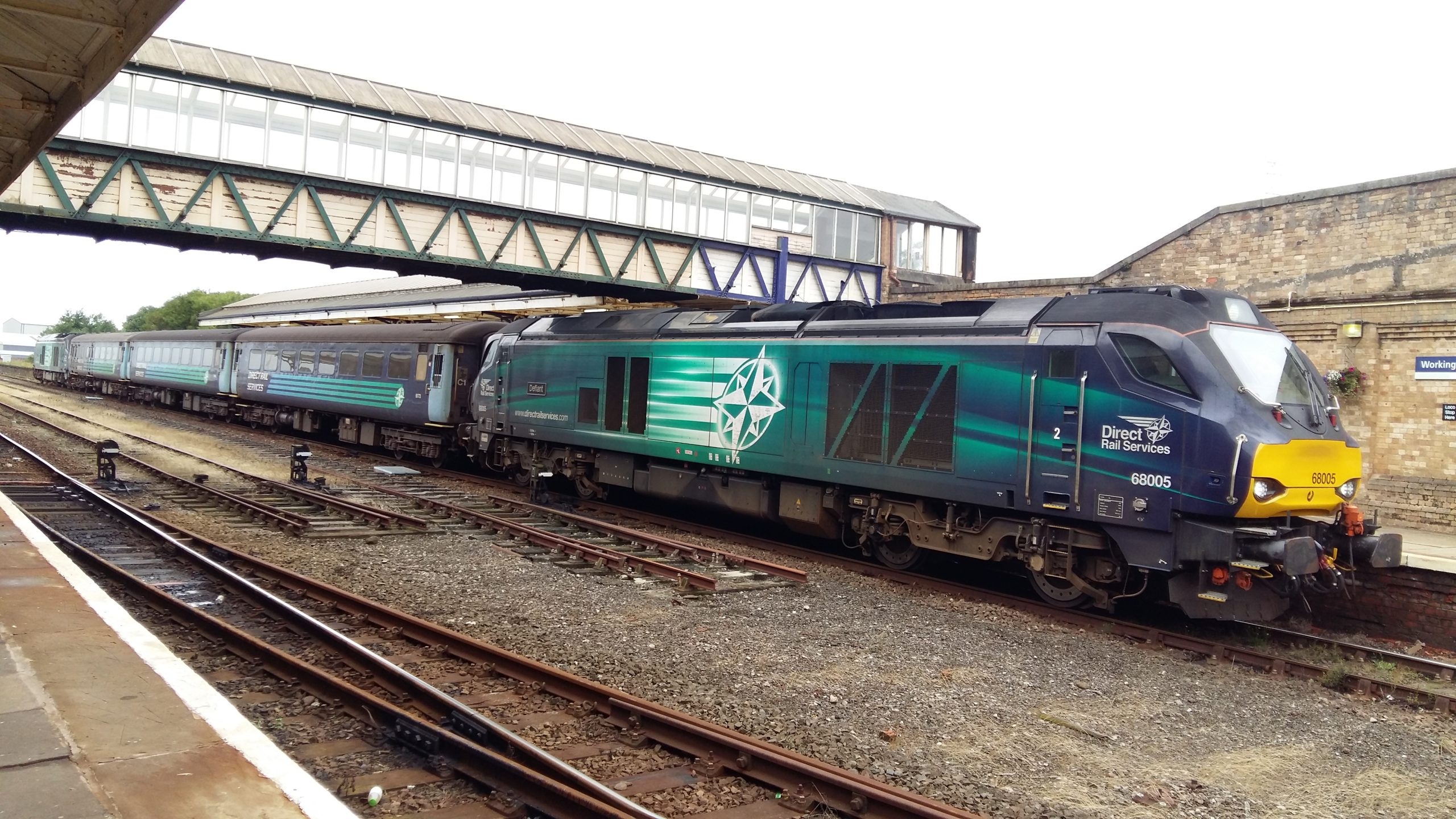
68005 leads the short set in August 2018
In January 2019 a special farewell tour was run from Carlisle to Barrow with top and tail class 37s with all proceeds’ going to charity,
Loco Shed 12D
The Trust set out in the late 1990s to acquire the town’s redundant locomotive shed and restore it as their base of operations. Located near the town’s only remaining railway station (there were once three stations in Workington), it had been deserted since use as a wagon repair shop in the 1980s. Unfortunately the weather, the souvenir hunters, and the vandals had taken their toll, leaving only a shell of three walls, some doors on the open end, and the structural steelwork which once supported the glazed roof.
The building was put up in the 1870s. With various additions and modifications through the years, it ended up as a 10 road shed with a central dividing wall separating it into two 5 road sections. Some roads had pits inside the shed or just outside the entrance. Our intention was to rebuild the shed for the display of trains and buses, build a reception & office block at one end, and add a covered platform along the East side for brake van rides down the long siding towards Bessemer Way bridge. The fan of sidings from the shed roads would have offered space for the display of resident and visiting locos and coaches.
In 1957 it was a sub-shed of Barrow, coded 11B, but was later to become a sub-shed of Carlisle, numbered 12D. It ended its days under the BR system as WK. Steam lasted officially until 1st January 1968, after which it was used for housing the diesel locos used on the areas heavy freight trains.
After the shed closed completely it became a wagon repair shop for a number of years; the station was then used as a stabling point for main line locomotives and the resident class 08 diesel shunting locomotive.
The 08 went in 1997, and it is now rare that locos are stabled here. However Northern still use the station as a signing on point with passenger trains stabled overnight.
Platform 5s book of “Steam Motive Power Depots – Volume 4” shows a picture of the shed in 1963 with two Derby Lightweight diesel multiple units (dmus) in the company of steam locos. The Whitehaven – Carlisle and Workington – Penrith lines were early users of these first generation dmus.
In 2006 the shed was sold to the Great Central Railway at Loughborough and dismantled for further use there, but sadly these plans did not materialise.
